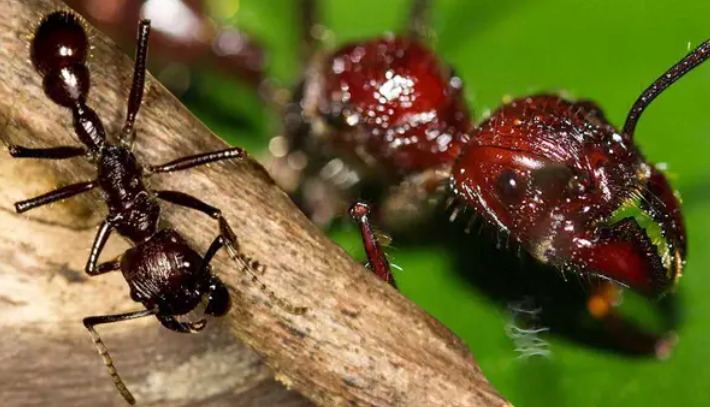Ants are among the most common and remarkable insects worldwide, known for their exceptional unity and communication skills. These insects are considered superorganisms due to their highly organized colony life. There are over 12,000 known species of ants, all belonging to the Formicidae family, and the global ant population is estimated to be over 10,000 trillion individuals.
Ants can be found in nearly every part of the world except for places like Iceland, Antarctica, Greenland, and other isolated or extreme environments unsuitable for their survival. Despite their fascinating nature, ants can sometimes become pests, necessitating the use of effective pest control services. Let’s explore more facts about ants.
9 interesting facts about ants
1. Ants have been on Earth for approximately 140-160 million years, emerging during the Cretaceous period.
2. The fastest ants can run up to 1.9 miles per hour.
3. Dulotic ants engage in the practice of enslaving other ants, a behavior known as dulosis.
4. Ants are less likely to be injured from falls due to their small mass and the square-cube law.
5. An ant’s brain contains about 250,000 neurons, significantly fewer than a human’s.
6. Ants began practicing forms of agriculture, such as fungus farming, around 50-60 million years ago.
7. Ants use sophisticated farming methods, including the use of antibiotics to protect their crops.
8. Ant behavior is driven by the needs of the colony, and while they have routines, anthropomorphizing their activities is inaccurate.
9. Some ants lack eyes or traditional ears but have developed other sensory organs to navigate and communicate.
6 surprising facts about ants
1. In the 19th century, Sir John Lubbock conducted pioneering research on ants, studying their behavior and intelligence, including how they respond to various stimuli.
2. Ants utilize the Earth’s magnetic field among other environmental cues for navigation, showcasing their remarkable navigational abilities.
3. Some ant species can form rafts to survive on water during floods, but the ability to survive submerged and the duration vary greatly among species.
4. The average weight of an ant is around 3 milligrams, though this can vary significantly across different species.
5. Ants are known for their remarkable strength, capable of carrying 10 to 50 times their body weight, depending on the species.
6. Ants release a chemical signal upon death, typically oleic acid, which prompts other ants to move the deceased to a waste area, illustrating their complex social behavior and colony maintenance activities.
3 amazing facts about ants
1. A unique species known as the turtle ant features soldiers with large, flat heads that effectively block the entrances to their nests, serving as a natural barrier against predators and intruders. This adaptation is a straightforward physical means of nest defense.
2. Ants exhibit complex social behaviors and can engage in organized conflict, utilizing strategies to protect their colony and its vital members. These behaviors are instinctual and result from the collective intelligence of the colony, demonstrating an advanced level of social organization rather than individual planning or understanding.
3. The bodies of ants produce formic acid, a defensive chemical that helps deter predators and parasites. This substance is used primarily for protection, acting as a natural defense mechanism rather than a means of communication or attraction through scent.
6 terrible facts about ants
- Fire ants pose a significant economic threat in North America, with their impact estimated in the billions of dollars annually due to damages, control efforts, and medical treatments.
- Some ant queens can live for decades, making them among the longest-lived insects, though lifespans vary widely within the ant population.
- The prehistoric giant ant, Titanomyrma giganteum, with a body length of approximately 2.4 inches and a wingspan around 6 inches, represents one of the largest ants ever discovered but has been extinct for millions of years.
- The largest modern ants, such as the queen driver ants, can approach 2 inches in length under exceptional circumstances, but no current species averages 2 inches for all individuals.
- Bullet ants are notorious for delivering one of the most painful stings of any insect.
- The world’s largest known ant colony, attributed to the Argentine ant, spans approximately 3,700 miles along the Mediterranean coast, consisting of interconnected nests rather than a single nest structure.
Verdict
Though ants have some terrible sides, in some cases they help to maintain the cycle of nature. However, you need to choose a good pest control company to get rid of them.

